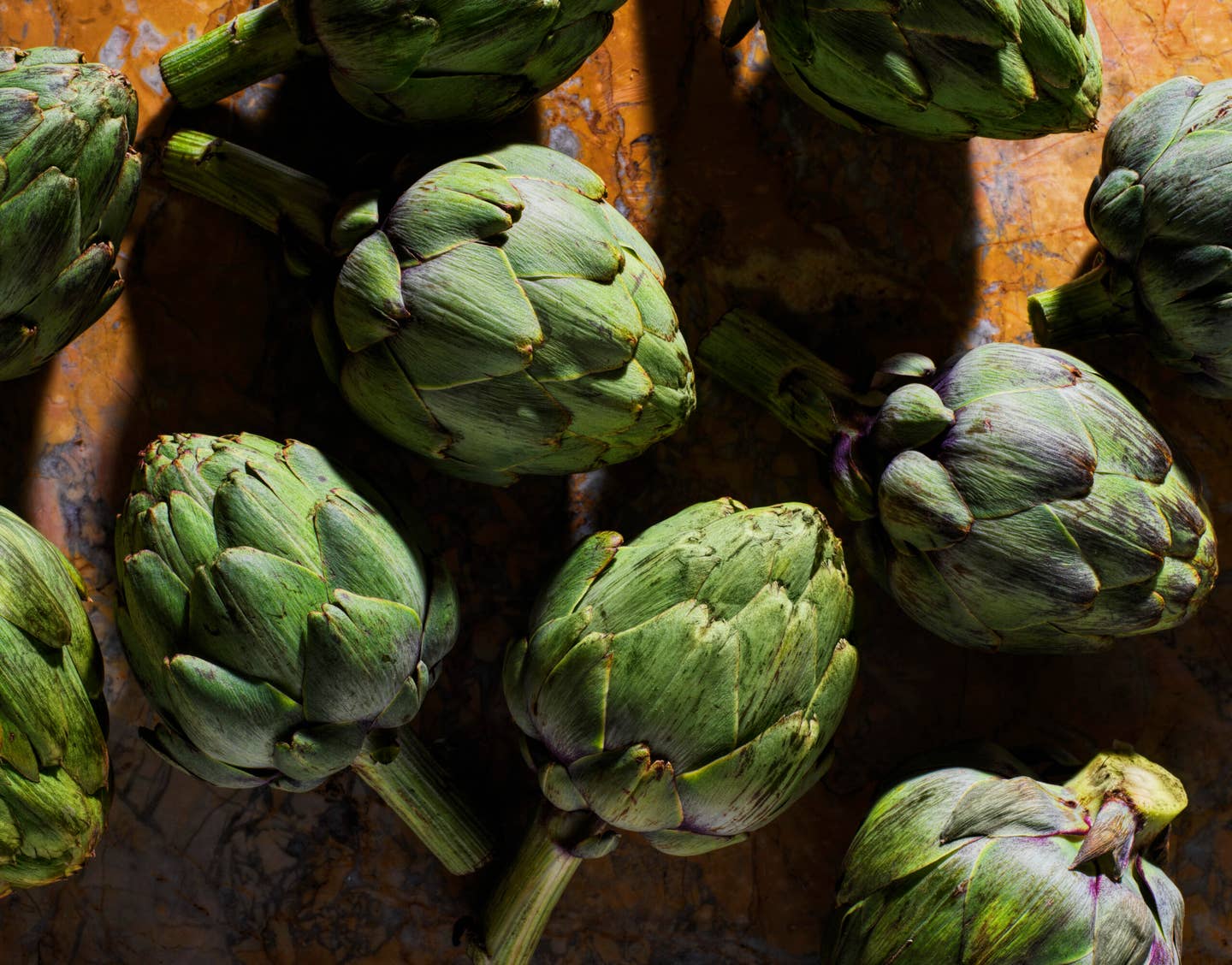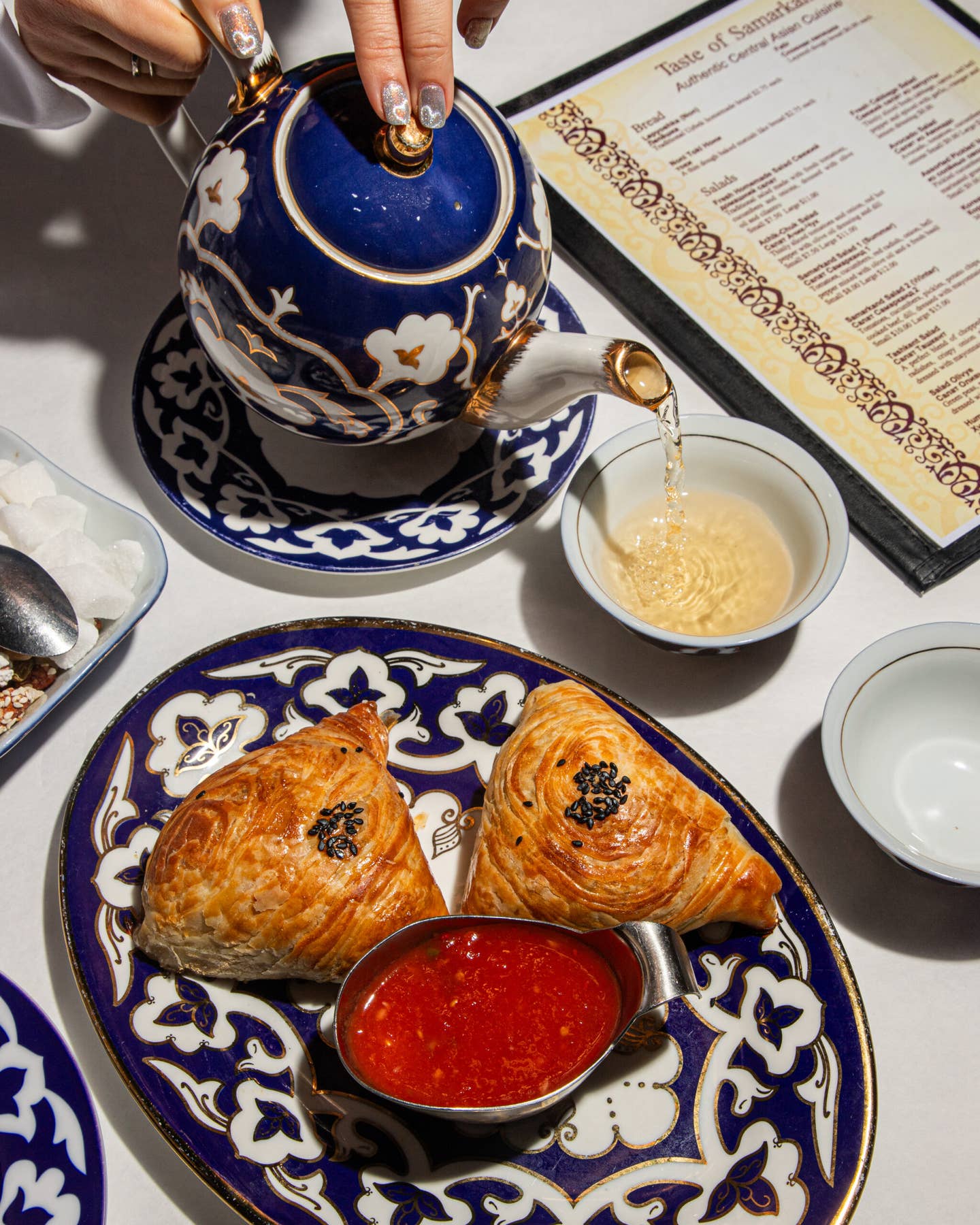
Why You Should Heart Artichokes (If You Don’t Already)
Get to know them, and they’re not so prickly.
“Here is a great big old bad artichoke—and some people are terribly afraid of it.” That's how Julia Child opened her artichoke episode of “The French Chef,” which aired in 1964. Sixty years later, that statement rings as true as ever.
And who could blame the fearful among us? Artichokes are prickly enough to draw blood, tough enough to dull a knife, full of what Julia calls “fuzzy hairy business,” and often expensive enough to make any budget-conscious cook balk. What’s more, peeling the vegetable with bare hands can leave palms and fingernails a ghoulish brown for days, thanks to a phytochemical called cynarin that stains the skin.
But here’s the thing: despite all that, they’re worth the hassle. Whether they come fried and scraggly (“Jewish-style” in Italy), braised in olive oil until spoon-soft (like Turkish zeytinyağlı enginar), whizzed into a cheesy dip (à la Land of the Free), or gratinéed with cheese and mushrooms (as is popular in France), artichokes are as phenomenally delicious as they are versatile. And they can even be fun to cook with—you just have to know your way around them.
Being a good shopper is step one. “Choose artichokes as you would flowers,” wrote Judy Rogers in the hallowed Zuni Cafe Cookbook. “Look for perfect ‘blooms’ with unblemished ‘petals.’” The comparison checks out because an artichoke is, in fact, a thistle that we eat at the bud stage.
“Perfect blooms” are preferable when you’re serving artichokes raw—say, shaved on a mandoline and tossed in lemony vinaigrette—as they’re sweeter and more attractive that way. But Jacques Pépin isn’t as picky as Rogers: “I wait until artichokes are old and yellowish—then buy them on sale for about a dollar each,” the author and television personality told me over the phone. “When I’m making artichoke bottoms, those are everything I need. I just trim off the discolored leaves.” Pépin likes filling the cavities with creamed mushrooms and finishing them under the broiler.
The way to remember the difference between artichoke bottoms and hearts is that only the latter have their leaves attached. Generally speaking, the bigger the artichoke, the more fibrous and inedible its choke (that fuzzy business!) and outer leaves. That’s why tender baby artichokes, which require little to no trimming at all, are so prized—and pricey. But as James Beard points out in American Cookery, “Size makes no great difference in the quality.” Making the most of the vegetable, then, depends on how you prepare it.
Artichokes can be laborious if you’re paring dozens of them for a crowd, but they can also be effortless: Boil them whole for 20-ish minutes, squeeze some lemon juice over the top, dunk the leaves in melted butter, and call it a day. Indeed, people have been advocating a “less is more” approach since at least 1655, when a French squire named François Pierre La Varenne published a number of artichoke recipes in his Le cuisinier françois. In a departure from the exotic, spice-centric cooking of his forebears, La Varenne and his contemporaries “treated vegetables as food in their own right” and “made much use of the globe artichoke and very little of spices,” according to Food in History by Reay Tannahill.
Artichokes were something of a novelty in La Varenne’s time. In Ancient Greece, cabbage, celery, lettuce, and cardoon—the artichoke’s predecessor—were mealtime staples, but the prickly vegetable as we know it today? Surprisingly, there’s no written record of it until 1466, though science points to its domestication around the beginning of the first millennium. The artichoke cropped up in Europe relatively late, believed to be introduced to Sicily by Arab farmers. (Perhaps that’s why the Spanish “alcachofa” and Italian “carciofo” stem from the Arabic word “al kharshuf.”)
It didn’t take long for Europeans to go gangbusters for the vegetable; by the mid-1500s, they were a sensation as far north as Great Britain. In the ensuing centuries, some of the world’s most celebrated artichoke recipes would be invented: Italian carciofi alla romana, braised whole with mint, parsley, and garlic; French artichauts à la barigoule, cooked in white wine and olive oil; and Spanish alcachofas con jamón, simmered until soft and shot through with nubbins of salty ham.
But being native to the Mediterranean, the artichoke took some time to reach North America, and even longer to catch on. The first recipe for the vegetable on this side of the Atlantic appears in the 1886 Philadelphia Cook Book by writer and dietitian Sarah Tyson Rorer. Beard writes, “They were called French artichokes at the time, and no credit was given to the Italians.” That era’s veneration of all things French obfuscated that Italian Americans in California established some of the country’s first artichoke farms. We probably have those Italians to thank for the artichoke hearts on our pizza and in our salads, and for the creamy all-American artichoke dip popular at potlucks.
Canned or frozen hearts certainly have their place (they’re perfect on bruschetta and blitzed into dip), but a fresh artichoke, prepared well, is a true wonder of spring. So, next time you see the green orbs at the market, toss one into your shopping cart. Set aside a few minutes to trim it with care, and steam it until it’s soft and sweet. Then take a page from Pablo Neruda’s “Ode to an Artichoke” and dig in: “Scale by scale / we undress / this delight / we munch / the peaceful paste / of its green heart.”
Recipes
Keep Reading
Continue to Next Story










